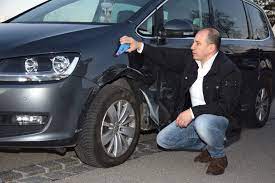
Car damage assessment is a crucial process that occurs kfz gutachter kaltenkirchen after a vehicle has been involved in an accident or sustained any form of damage. It involves evaluating the extent of damage to the vehicle’s body, engine, interior, and other components to determine the necessary repairs and estimate the associated costs. Mastering the art of car damage assessment requires a keen eye, attention to detail, and an understanding of automotive mechanics. In this comprehensive guide, we will delve into the intricacies of car damage assessment, covering everything from initial inspection to final evaluation.
- Initial Inspection:
The first step in car damage assessment is conducting an initial inspection of the vehicle. This involves visually inspecting the exterior of the car to identify any visible damage such as dents, scratches, or misalignment. It’s essential to examine the entire vehicle systematically, paying close attention to areas prone to damage in accidents, such as the front and rear bumpers, fenders, doors, and hood.
Additionally, inspect the interior of the car for any signs of damage, including deployed airbags, cracked dashboards, or broken seatbelts. While some damage may be immediately apparent, it’s essential to look for any hidden or structural damage that may not be visible at first glance.
- Documentation and Photography:
Once the initial inspection is complete, document all observed damage thoroughly. Take detailed notes and photographs from multiple angles to capture the extent of the damage accurately. These records will serve as valuable evidence during the assessment process and can help ensure that no damage is overlooked.
- Structural Assessment:
After documenting the visible damage, it’s crucial to assess the structural integrity of the vehicle. Structural damage, such as frame misalignment or chassis deformation, can significantly impact the car’s safety and performance. Use specialized equipment like frame straightening machines and laser measuring systems to identify and quantify any structural damage accurately.
- Mechanical and Electrical Inspection:
In addition to assessing the vehicle’s exterior and structure, it’s essential to inspect its mechanical and electrical components thoroughly. Check the engine, transmission, suspension, brakes, and other critical systems for any signs of damage or malfunction. Conduct diagnostic tests to identify any underlying issues that may have been caused by the accident.
- Estimation of Repairs:
Once all damage has been identified and assessed, it’s time to estimate the cost of repairs. This involves calculating the labor, parts, and materials required to restore the vehicle to its pre-accident condition. Work closely with repair technicians and automotive experts to ensure accurate estimates and avoid any surprises during the repair process.
- Final Evaluation:
Before finalizing the assessment, review all documentation and photographs to confirm the accuracy and completeness of the evaluation. Double-check calculations and consult with other professionals if necessary to validate the assessment findings. Provide the vehicle owner or insurance adjuster with a comprehensive report detailing the damage assessment findings and repair recommendations.
Conclusion:
Mastering car damage assessment is a skill that requires both technical expertise and attention to detail. By following the steps outlined in this guide, automotive professionals can conduct thorough assessments that accurately identify and evaluate vehicle damage. Effective damage assessment not only ensures the safety and reliability of repaired vehicles but also helps streamline the repair process and minimize costs for vehicle owners and insurers alike.
